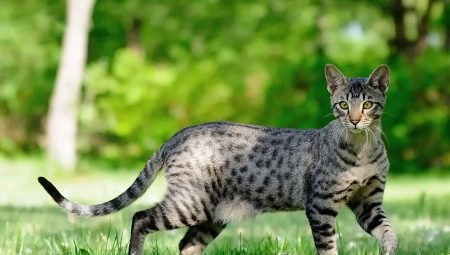Savannah is a rare breed of cat with a unique cheetah color. These amazing cats are distinguished by a sharp mind, excellent health, and are also known throughout the world due to their huge cost up to 20 thousand dollars. In this article you will find a description of this breed, the nature of individual individuals, as well as the conditions of their maintenance.
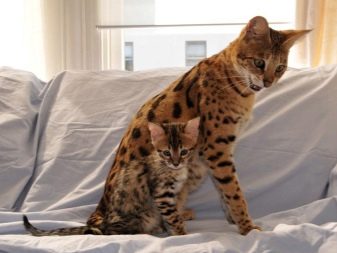

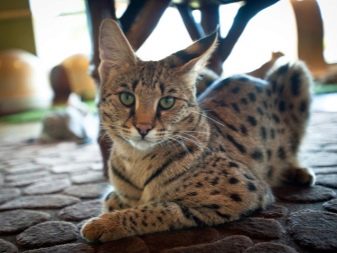

Origin history
Savannah is an extremely young breed, which appeared only at the end of the XX century. Around the 60s after World War II, breeders began to actively engage in breeding and crossbreeding of various types of pets. Among them was also a wild African serval cat.
Around the 80s of the 20th century, a large number of nurseries appeared in America that were breeding these wild pets. At that time, fashion for exotic animals was very popular and many celebrities preferred to buy leopards, cheetahs and even tigers in their farms. The domestication of the serval was to some extent an attempt to reduce pressure on the wildlife and at the same time provide rich people with animals that would be more suitable for the definition of a pet.
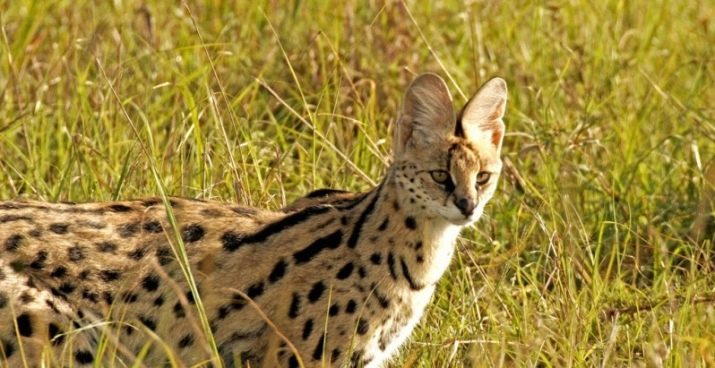
Almost at the same time, one of the owners of cat farms, popular at that time, came up with the idea of bringing one wild serval to their farm. The new pet quickly adapted to a new life and soon found a companion - Siamese cat Juti. It was this cat in 1986 that gave birth to several kittens, including one spotted girl who, with all her appearance, resembled her wild father.She inherited such qualities from him as strength, grace, natural beauty and excellent health, but from her mother, according to the hostess, she received the most important thing for any breeder - love and affection for people.
The girl was given the name Savannah - for her amazing color and similarity to the cheetah. This generation, a mixture of Siamese domestic cat and serval, was called F1. Very soon, already from a thoroughbred Angora cat, Savannah gave birth to several kittens, the generation of which was named F2.
Further, the breed was subjected to multiple breeding studies of another breeder and breeder - Patrick Kelly, who bought one of the kittens born. The result of these experiments was the official announcement in 1996 of savannah cats as a completely individual breed. The first standard of this species was adopted by the International Cat Association.
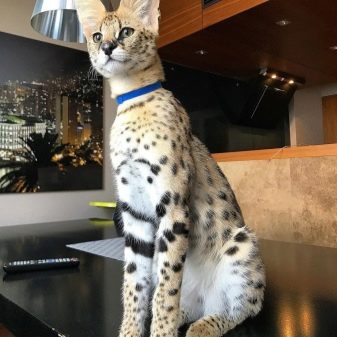
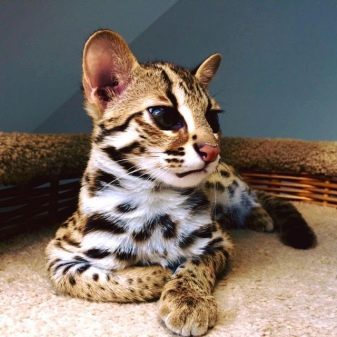
Many may be familiar with this breed thanks to the high-profile case of Simon Brody. This is a well-known fraudster, who at the end of the 20th century, using the breed’s low popularity, as well as numerous marketing techniques, literally proclaimed this cat his new, self-bred breed called Ashera. The name of the supposedly new breed came from the name of the goddess of Western Semist mythology.
The appearance of a "new breed" in the market caused a real sensation. Even despite the enormous cost of about 20 thousand dollars, many collectors and rich began headlong to order these unusual cats home. They were not only unusual in an exotic way, but, according to the assurances of the selling company, they had a sharp mind and a friendly character. The company also stated that this is the only breed in the world that required daily walks on a leash, which is why Ashera was able to enter the market not only for cat lovers, but also for dog lovers.
Over time, the popularity of this breed began to reach the point of absurdity: the price increased significantly, and the line for the purchase of one individual began to stretch for years to come. At the same time, none of the rich people who bought a cat knew that their rarest and most prestigious breed in the world was already known in world society.
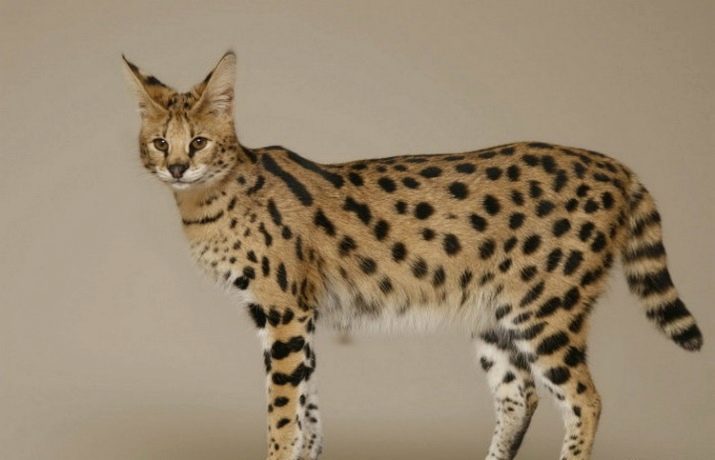
Exposing the activities of Simon Brody came only in 2008. While photos of the new and scandalous breed were circulating in the press around the world, one of these newspapers was noticed by Chris Shirk, the breeder of this rare breed in Pennsylvania. His experience and knowledge helped shed light on the true origin of the mysterious Asher breed. This exposure ended the campaign of Simon Brody, however, even after the exposure, this breed did not lose popularity. Moreover, many breeders even now use the name of the Asher breed in their advertising, which is why they give out their ignorance in terms of the history and pedigree of this type of cat.
All other varieties of savannah, the so-called F3, F4 and so on, are the result of selection of the serval with other purebred breeds. It is believed that the larger the number after the letter F, the less in this variety of data a purebred African serval. Another well-known species of savannah is a variety created by crossing a serval and a cat of the Egyptian Mau breed.
Today, for breeding this breed, the genetic data of precisely Bengal or Siamese cat species are taken.
Despite the tireless work of international breeders, the savannah remains one of the rarest breeds - there are several thousand purebred individuals around the world at best. Most of them are kept in nurseries in the United States and Great Britain, the rest are from private breeders or wealthy people around the globe.

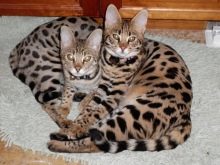

Description
There is a mythical opinion that during the formation of the savannah breed, breeders used the genetic material of real cheetahs. All the grace, dexterity and natural beauty of these wild animals was embodied in a miniature look of a pet.
It is necessary to consider in more detail the exterior features of such cats.
- Head. Regular and proportional, in relation to the body has medium dimensions. It wears the shape of an equilateral triangle (excluding ears). Cheeks slightly stand out against the background of the muzzle, mustache is long, frequent, white.
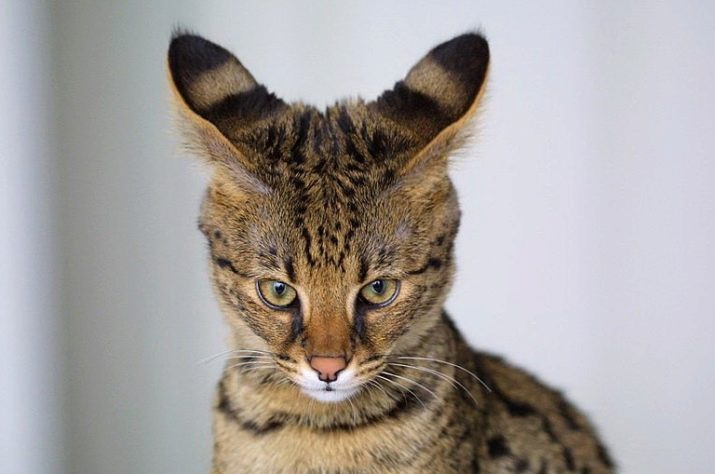
- The ears. The auricles are large, in a relaxed position set perpendicularly, with the open side facing forward. The tips of the ears are usually rounded, without tassels. Widely set, however, the distance between the bases above the superciliary arches is only 1.5-2 cm.
In purebred breeds, characteristic dark stripes or spots can be seen on the outside of the ears.

- Eyes. Standard round or almond-shaped, small size. Set fairly wide (the distance between the eyes is equal to the length of one eye). The iris, as a rule, is sandy, gently green or honey tint - regardless of the color itself.

- Muzzle and nose - quite wide, but smoothly stand out against the background of the whole head. The front part of the muzzle is white or light in color, as are the cheeks themselves with a mustache. The nose is dark, gray or reddish.
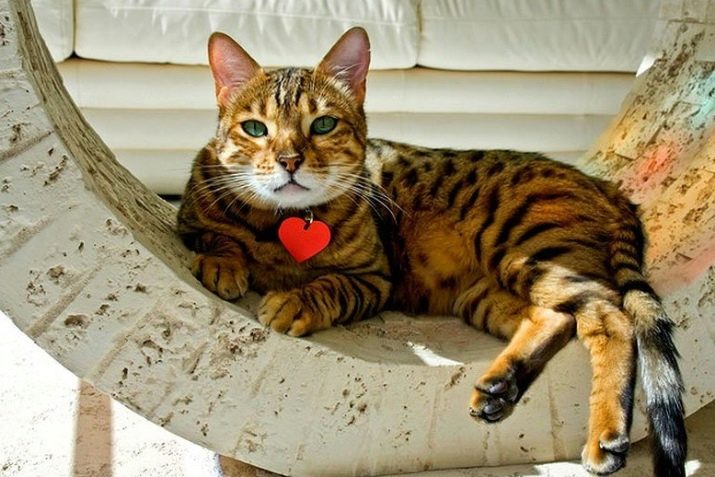
- Chin. Massive, smooth and proportionate, covered with thick hair, harmoniously looks with a muzzle. The lower part is white or light.

- Housing. Significantly elongated, wide, regular shape. It is covered with a thick layer of cheetah coat with dark spots. The shoulders and hips are strong, the bones are moderate.
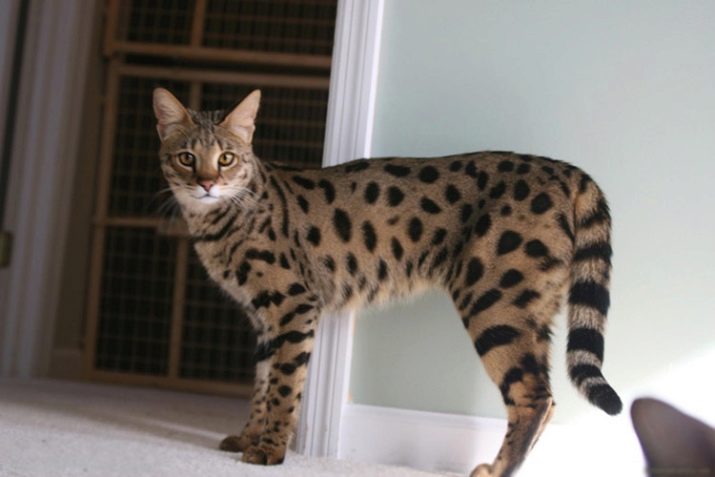
- Rib cage wide, stands out against the background of limbs in a sitting position. Thanks to this peculiar posture and convex chest, cats of the savannah breed are considered aristocrats in their family.
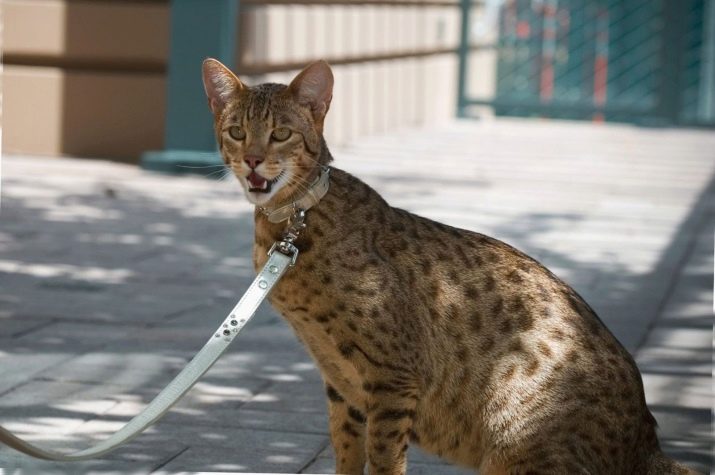
- Limbs. Paws are very long, with well-defined muscles, covered with a thick layer of wool. The hind legs are more powerful than the forepaws and much longer in size. The paws themselves are medium in size, the pads are large, oval or round in shape, the color is dark or black.

- Neck. Oblong, but not particularly thick. Flexible, smoothly moving to the head.

- Tail. Medium length, not particularly wide, narrowed at the tip. It has a characteristic striped color (most often black-copper). The color of the tip is usually dark.
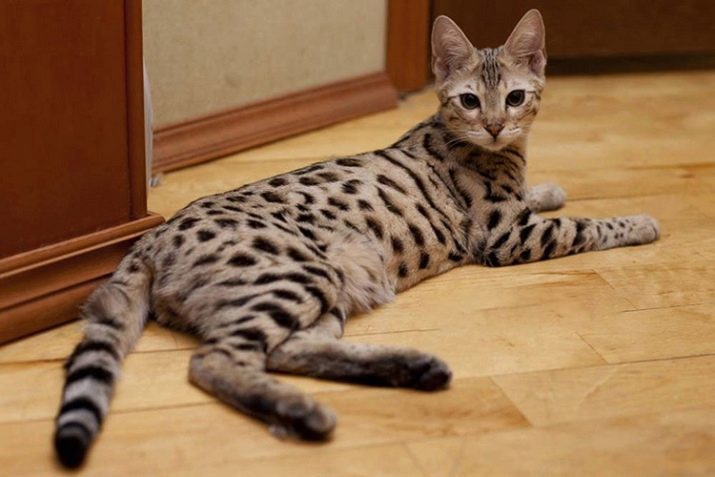
- Hairline. A continuous layer covers absolutely all parts of the cat’s body, on the back and muzzle is slightly thinner, on the chest and stomach, on the contrary, is noticeably longer. The color is mainly cheetah or slightly darker - yellowish, wheaten or white in the base with frequent dark spots along the whole body. The texture of the coat is coarse, springy, thick.

Below you can familiarize yourself with the standards specific to cats of this breed.
- Savannah belongs to the breeds of cats with an extremely massive physique and body. Because of this, a single individual can reach a weight of up to 15 kg. The largest females weigh much less than males and rarely reach 10 kg.
- Already upon reaching six months of age, the savannah can grow up to 40 cm in height (at the withers), and by its coming of age, which occurs at about 2.5-3 years, it can even grow to half a meter.
- average life expectancy. Serval, which are the ancestors of this breed of cats, live in the wild for no longer than 12 years. However, with the help of selection and domestication today, they and their direct descendants (savannah) can live at home for up to 17-20 years. Before buying such a pet, you should understand that he will become your friend for a very long time.
- approximate cost. Thoroughbred individuals can be sold for 10-20 thousand dollars. Individuals with external defects, poor documents or a spoiled pedigree can sell for $ 600 or more. The price also depends on the uniqueness and correctness of the color and sex, the health of the animal.
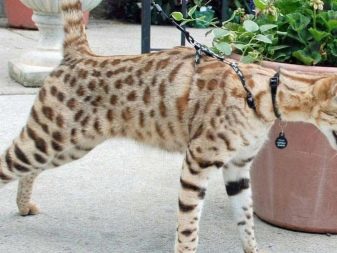

Character Features
Savannahs, like representatives of the Rex breed, are extremely friendly pets.Their main feature is attachment to the owner and a constant need for attention. Even in adulthood and old age, these cats do not stop climbing, constantly get naughty and do not tolerate long sitting in one place.
Characteristic features of savannah cats are listed below.
- Devotion and affection. From the very first day when this pet appears in your house, get ready that he will accompany you everywhere. When you go to cook, he will sit in front of you and will watch with interest the whole process. When you lie down to rest, he will lie down beside you and will be quite rumbling under your side.
An exception in this case is the purchase of already adult breeds - it is very difficult for mature individuals to get used to new owners as a rule. The savannahs are exceptional monogamous, they can show not only fear, but also open aggression towards people with a new smell.
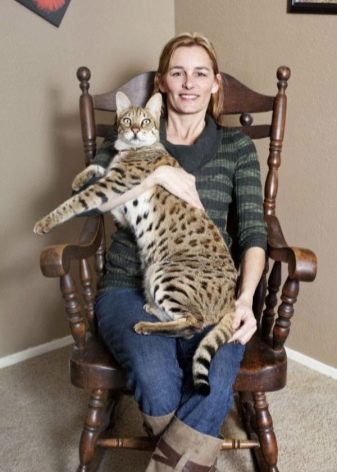
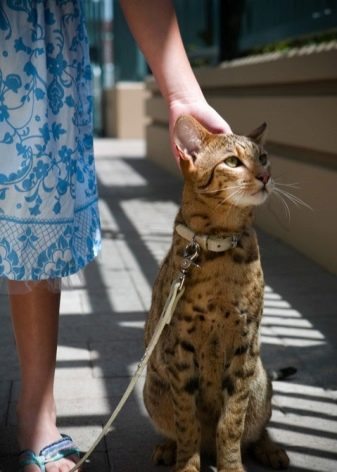
- Activity and thirst for adventure. For these cats, a large area with climbing obstacles is vital. The same applies to active games and entertainment, without which these cats can not live a day. Such injustice has a price - often savannahs, succumbing to excitement, can overturn or overturn something fragile. In addition, the savannahs are very inquisitive and often like to poke their nose into the premises closed to them.
The sharp mind of these cats allows them to easily open simple doors, and the athletic capabilities of the body make it easy to climb tall objects.
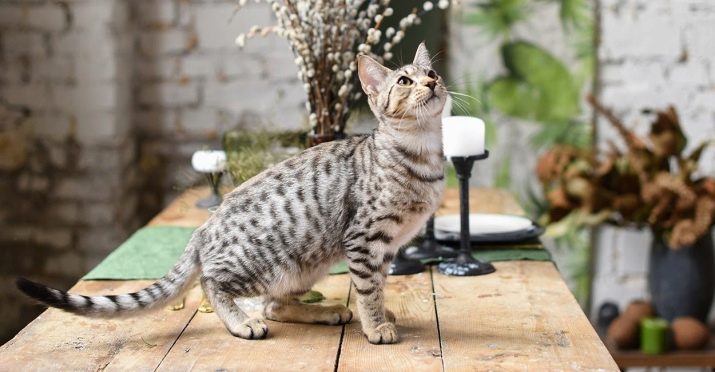
- Passion for everything edible and inedible. The curiosity of these cats often leads to damage to various equipment and decor items. At a young age, they begin to actively grow claws and teeth, and without a good claw, they switch to furniture, curtains, love to chew laces and gnaw wires.
It is more often necessary to do a thorough cleaning in the apartment so that the animal is not poisoned by some old object lying behind the sofa.
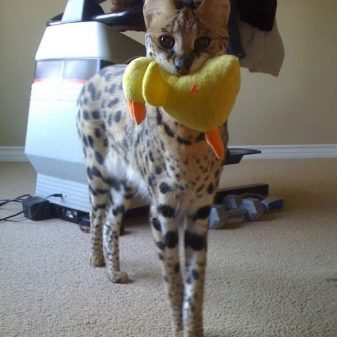
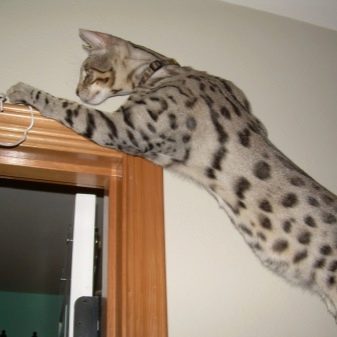
- If the cat is in its owner’s apartment, it feels completely protected. Most savannas are wonderful for new family members, children, guests, and even other pets (although they prefer a dominant position in such relationships). It is difficult to call them bully or aggressors. However, some individuals are extremely shy and can simply run away and hide when they see a new person in the house.
Attitude to new people depends on the relationship of the cat and the owner. In a healthy relationship, the pet feels safe and does not show signs of alertness or aggression.
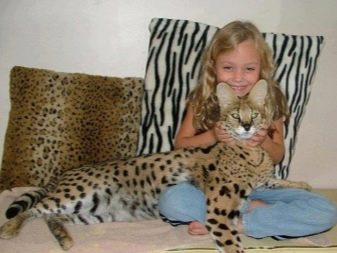
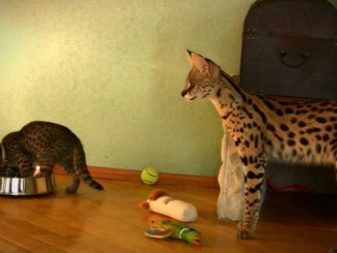
- Unlike most cats, savannahs are great for water procedures. Here we are not talking about a full bath, but about water games and entertainment. Especially these pets love to play with toys floating in the water. They also love to lower their paws into the water in order to cool, wash or play.
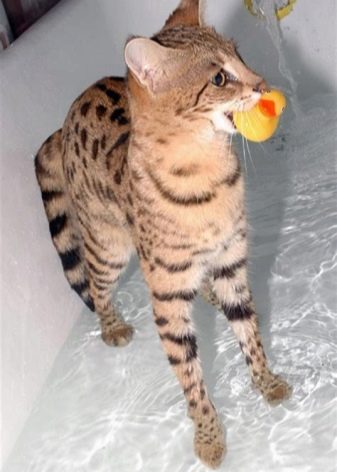
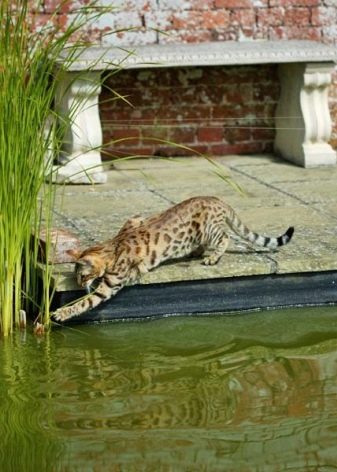
- Savannahs are smart enough to remember several commands, may bring in your order some things or perform tricks. Training will not last long - these cats have innate data for training and taming.
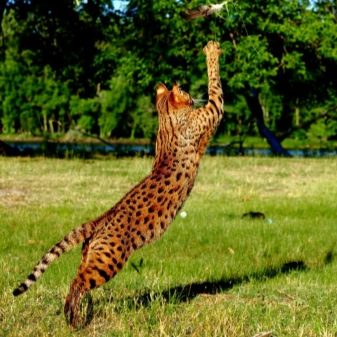

- Minus some other cat breeds, these differ in patient character. In the absence of the owner of the house, they are able to remain calm and just wait for a long time, while always finding what to do if the owners left enough toys at home. When the owner returns, the savannah will meet like a real dog - he can not only curl around his legs and rub his head on them, but simply jump onto his arms or shoulders.
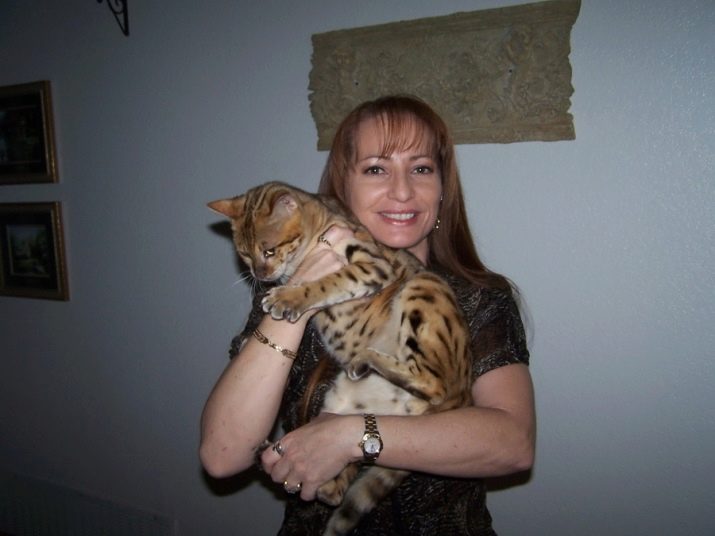
- Cats of this breed are tolerant to petting and stroking.. If the animal needs your attention, it will give a sign - it will spin near its feet, ask for knees or purr. The rest of the time, the savannahs either play on their own, or simply relax and observe the actions of the owner.
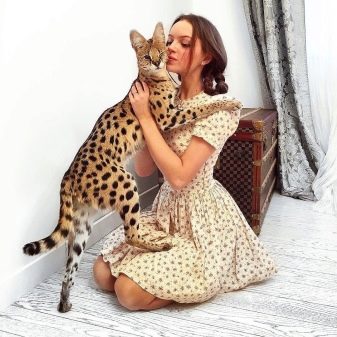
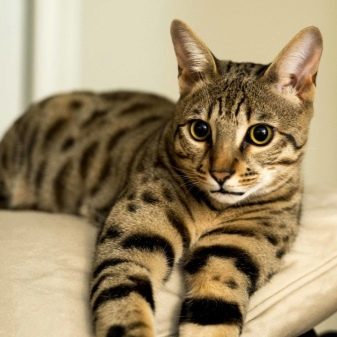
Wool color options
There is a direct dependence of the color of the savannah on the breed of cats, the material of which served to cross a specific individual. As a rule, the material of a purebred serval and a cat of a completely different breed is taken as the basis.
This breed is distinguished by several individual colors. The name of the color indicates the dominance of this shade in the entire appearance of the animal. As for cheetah spots, they always remain dark, black or brown.
The following color options are available:
- silver or platinum;
- brown or dark honey;
- dark chocolate;
- golden or wheat;
- tabby cinnamon (pale or pale brown color).
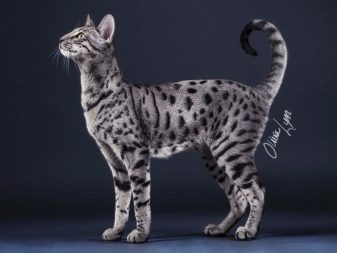

There is also a list of certain external characteristics that determine the suitability of an individual for exhibitions and competitions.
Defects of appearance are:
- white oval spots on the chest or abdomen;
- cheetah spots have an extraordinary color, lighter than brown and black;
- spots are completely absent, the color consists of dark tiger stripes against the background of the main color.
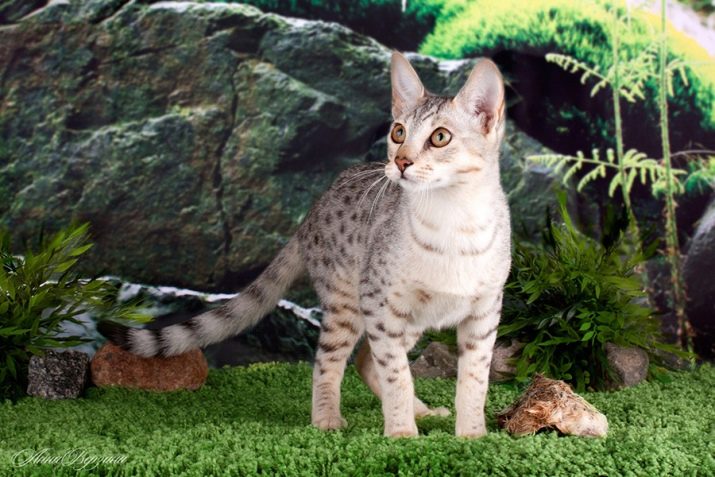
Conditions of detention
As has been said many times, the servals are direct relatives of the savannahs. Thanks to the good health of these wild cats and their adaptability to adverse environmental conditions, the savannas do not need any special care.
See the list of sample recommendations for caring for these pets below.
- House. The savannah should have its own place where the pet can rest, sleep and eat. It can be both houses and special beds for cats. The house should be in a warm place, after all, the servals themselves live in Africa, which means they are used to a lot of natural heat. There should not be any drafts, damp corners or frequent airing near the house.
In addition, try to choose a place where the animal would have the most comfortable view of what you are doing.

- Water. Provide constant access to drinking water. Many breeders report that the animal prefers to bathe in such water and pollutes it, in this case it is recommended to put two containers. The first is for water: the bowl should be heavy enough so that the cat does not turn it over. The second capacity is more voluminous, so that it is more convenient for the cat to take baths.
Try to pour a little warm water, as it may take a long time until the cat needs it.
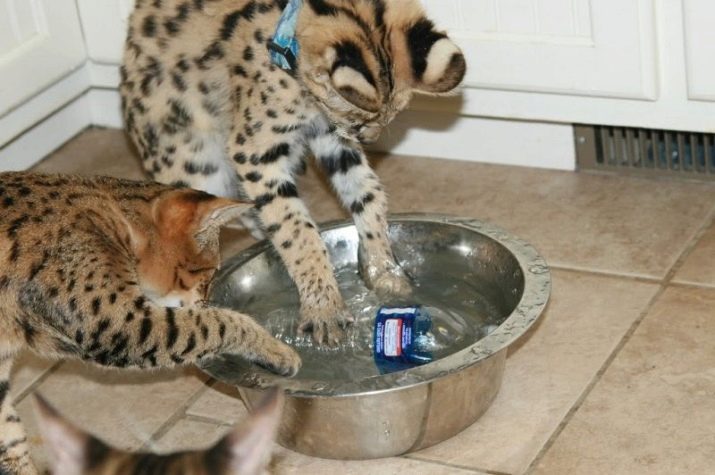
- Interior. All small and fragile items that you have on tables, shelves and cabinets should be removed on the first day of the animal's arrival in the apartment. It is almost certain that during the course of the game the pet will damage them or break them, or perhaps they will hurt themselves. The same goes for home flowers - many of them, especially violet, euphorbia, ficus, azalea and Kalanchoe, can be deadly for your cats. Similar attention should be given to household appliances and chemicals. Do not let the animal into the bathroom, which is full of harmful powders, mixtures and gels. Also hide all wires that are in sight. Special attention should be paid to curtains and furniture, about which these cats are very fond of sharpening claws. Immediately it is worth stopping these attempts and presenting the animal with a special scratching post.
It is not worth scolding the savannah - some individuals are very vindictive and prone to a long accumulation of anger and resentment.
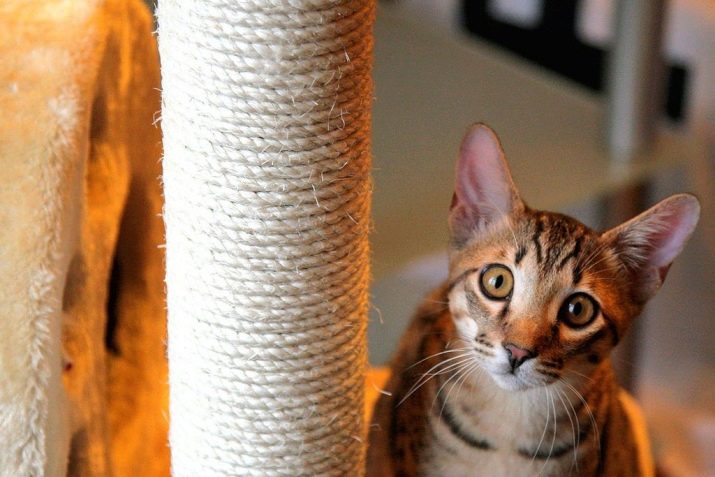
- Wool. The savannas have a fairly dense hairline, because of which they can leave a lot of hair on furniture and clothes. To cope with this, it is worth buying special combs for combing fleas or gloves. So you can kill two birds with one stone.
Despite the density of the coat, some varieties of the savannah breed are considered hypoallergenic. This myth was born from the advertising company Simon Brody, which was already discussed above.

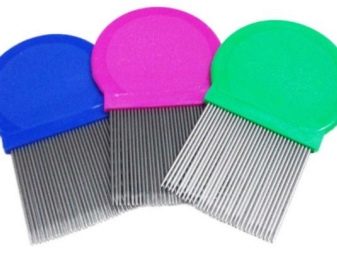
- Entertainment. As already mentioned, these animals do not tolerate boredom and long rest.Therefore, before you get such an exotic pet, you should buy him some interesting toys. Also, these pets love to climb various obstacles, so you should consider placing special racks in the rooms for such games.
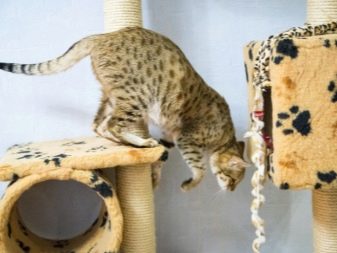
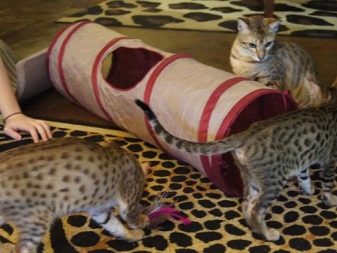
- Hygiene. Remember to pay attention to basic hygiene procedures. This includes clipping overgrown claws, brushing your teeth, rinsing your eyes, inspecting and cleaning your ears from dirt and sulfur. The animal is unlikely to be delighted with such procedures, so you should distract him, letting him gnaw on a treat.
To calm the frightened savannah, you just need to stroke it and constantly talk about something soothingly.
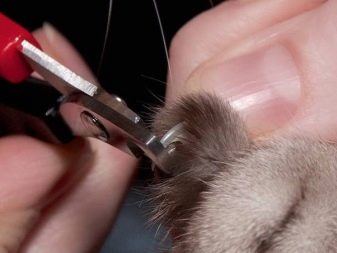
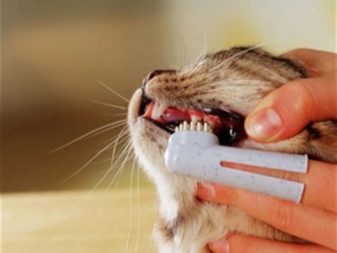
- Parenting. In no case do not beat these animals, otherwise they will become angry and aggressive, and they remember the insult for a long time. Resort to the method of encouragement, try to associate some lessons with the presentation of certain goodies.
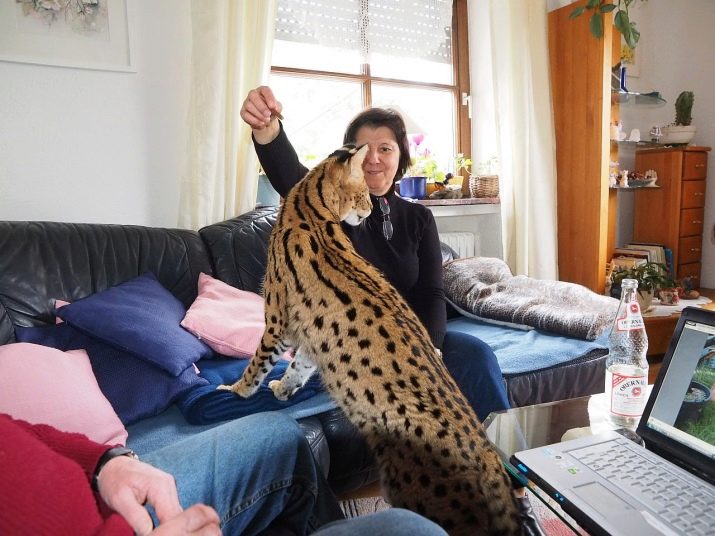
- Content. In small apartments with limited squares, such pets should not be opened, they will be too crowded for this entertainment lover. The best option would be to keep the savannah in a large country house with constant access to the street.
If you have a large apartment, but you do not live in a country house, then try to ensure regular walks for the animal away from the bustle of the city.

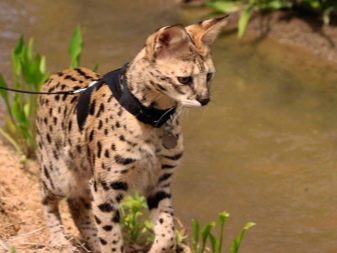
- Training and lessons should be carried out regularly and sometimes return to already completed material. If the animal at some point is extremely excited and categorically refuses to study, leave it alone for a while, and then try again.
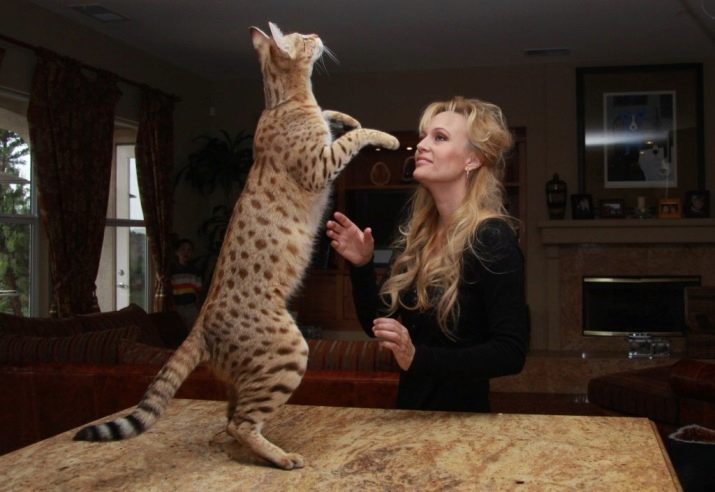
- Restroom. The latrine should be marked immediately as soon as the animal has stepped on the threshold of your apartment. For the toilet, you should choose a special tray with good filler. The tray should be in an accessible place where the cat could enter at any time convenient for her. If you bought a kitten, then at first you have to put up with dirty corners and puddles.
To make the animal more accustomed to it, mix some of the excrement with the filler in the tray. So the kitten will be easier to navigate in the future to a place where you can relax.

- Breeding. Initially, savannahs were bred in extremely small quantities, and therefore breeders had to interbreed related individuals. At the same time, no hereditary ailments were found in the kittens. That is why the breeding of these animals is considered profitable and not particularly difficult.
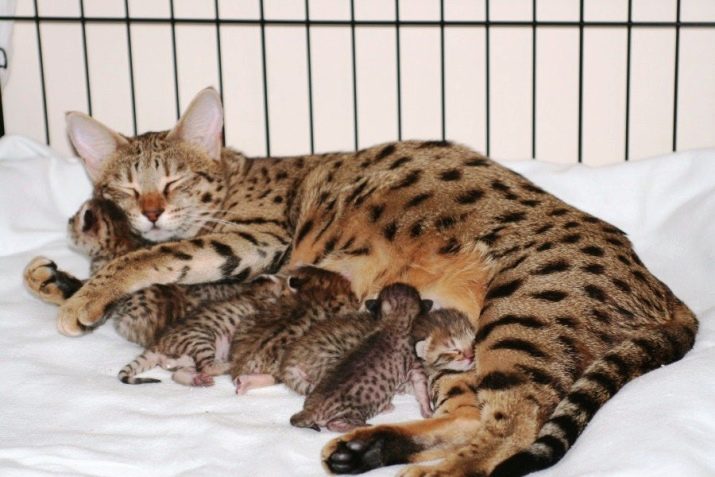
Feeding
Unfortunately, for all of Europe there are no more than a couple of thousand such individuals, and therefore it is difficult to say unequivocally about the most suitable food for this breed. To answer this question, you should turn to the ancestors of the breed - noble serval. In the natural environment, their diet consists only of natural food of animal origin. On the day, young servals should consume at least a kilogram of natural fresh meat for the full development of the body.
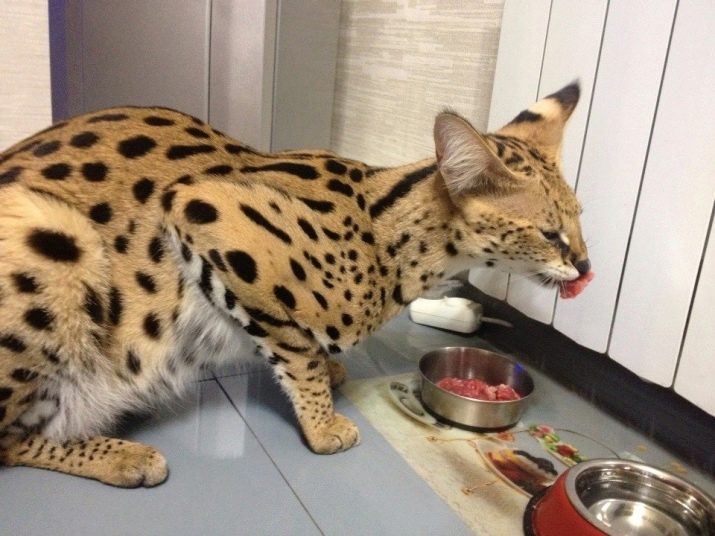
To date, there are two feeding schemes for these cats. The first concerns feeding exclusively with natural products of their own preparation.
This method is good for several reasons.
- Control over quality, quantity and calories. You yourself prepare all the food, which means you can have a complete picture of those vitamins that the animal receives.
- All cats are more likely to relate to cooked natural food.. It has a natural smell and does not seem dangerous or suspicious to the animal.
- Such food is always diverse., because you yourself can add some new product to the diet and not worry that it will ruin the taste or harm the animal.
But this option also has its drawbacks.
- You have more worries about regular cooking. You must constantly monitor and count all the calories so that your pet does not have problems with the digestive tract. Not everyone has time for this.
- Such food is much less stored and retains the most useful elements only in the first hours after cooking.
- In natural cooked foods there are no other vital vitamins that are present in every quality feed.
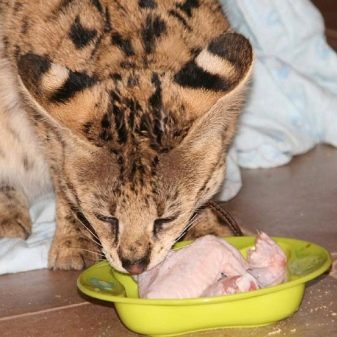

The second feeding scheme concerns feeding the savannah with exclusively dry food. In this case, only the highest quality feeds are selected. This scheme also has its advantages:
- long feed storage in suitable conditions;
- there is no headache about what to cook a pet for dinner;
- As a rule, it contains the most necessary vitamins and minerals.
Cons are also here.
- Such food, despite its balance, does not differ in variety. The pet quickly gets used to it and can very soon refuse to eat without additional treats.
- Good feed is very expensive, and this will affect the financial situation of the owner.
- You will never know exactly what is inside such a feed. Many companies prefer to add cheap flakes to feed to give it weight.

Be that as it may, there are products that in any case are necessary and extremely useful to give savannas. And there are those that are not worth giving. You should deal with these products in more detail.
So, healthy foods: raw or boiled meat, offal, turkey, tuna, minced chicken or chicken. In general, always rely on foods high in acid such as taurine.
Dangerous and non-recommended products: most fish products (after all, servals are predators), dairy products (to avoid problems with the digestive tract). Cereals and crops are given only in minimal quantities as an additive, but not the main feed - the savannah organism is not adapted to digest these crops.
If you took the animal from the cattery or took it from other hands, then you should ask the previous owner what he fed the cat with. So you can organize a smooth and uniform transition from old products to new ones. Try to introduce new products, gradually increasing their percentage in the daily diet.


Not only the general condition of your pet, but also its lifespan depends on proper feeding. Breeders have proven that balanced feeding can extend the natural lifespan of this breed by several years.
An adult should be fed no more than 3 times a day, but water should be in the public domain at all times. Allocate a strictly defined time for serving food, and also try to strictly preserve feed doses to avoid obesity.
In the winter, it will be necessary to add vitamin supplements and minerals to the diet, this also applies to elderly individuals and pregnant cats. In the latter case, the amount of feed should be doubled.
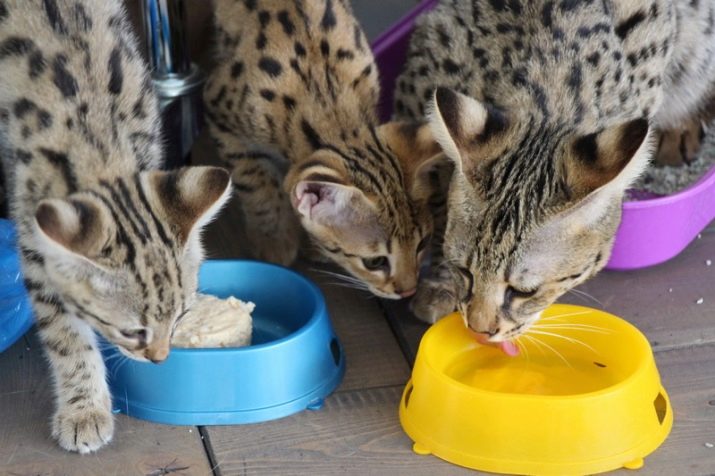
Health
Savannah cats are simply remarkable for their good health, they do not have any genetic diseases. Experienced breeders cite the roots of wild servals that were adapted to even the most severe environmental conditions as the reason for such a strong immunity.
The main part of the diseases of these cats concerns diseases common among all other breeds. More than half of these diseases can be prevented with timely vaccination and regular visits to the veterinarian.
These cats also have a certain predisposition to congenital external defects. Basically, they can not affect the health of your pet, but if you get an animal for sale in breeding farms, such individuals will be considered defective. Like, in general, and their offspring.
These defects occur most often due to improper care during pregnancy.
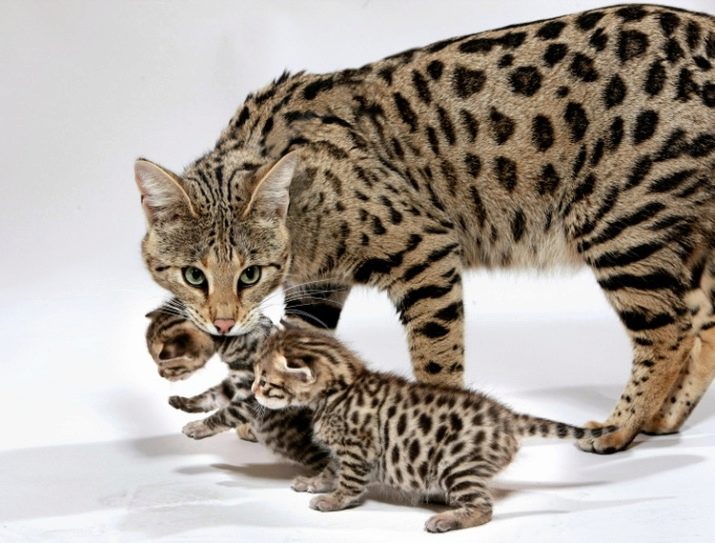
To prevent many diseases, it is enough to carefully monitor your pet and its well-being.
The following is a list of symptoms in which you should immediately contact your veterinarian:
- decreased overall activity, excessive lethargy and drowsiness;
- vomiting or regular diarrhea, problems with urination (screaming or moaning - it is evident that the animal is hurt);
- the appearance of blood in excrement or urine;
- decreased or complete lack of appetite;
- the appearance of lameness;
- increased moisture absorption / increased urination, including constant licking of the nose and muzzle;
- the appearance of hematomas, itching or redness on the skin, the animal regularly itches;
- supernatural molt, baldness of certain parts of the body.
If you have no experience in the treatment of these exotic animals, in no case do not take for self-medication. You only do harm to your pet.

See more about Savannah cats in the next video.
